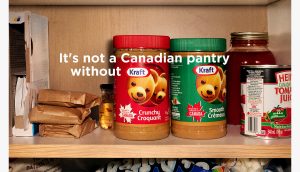
Although Canadian consumers believe companies have been more inclusive these days, they also feel there is room for improvement when marketing to LGBTQ+ consumers and in driving a more inclusive media landscape.
This is according to a new Nielsen survey, which looks at the level of inclusivity in programming and advertising content, as well as the general media consumption of the LGBTQ+ community.
“It is encouraging to see that we are heading in the right direction, with 63% [of respondants] agreeing inclusivity has improved over two years,” says Paige Sontag, director of client strategy for Nielsen Activation, Measurement, and Media Analytics Canada. “The purpose and consumption of some of the most recent and modern forms of media are more aligned with the requirements of the LGTBTQ+ community now.”
According to the survey, 12% of respondents who consider themselves part of the LGBTQ+ community say they’ve been the recipient of an online ad based on their sexual orientation or gender identity. Slightly more than half (51%) of the respondents felt positive about their most recent experience with a sexual orientation and gender identity-informed ad approach.
And, while 43% of LGBTQ+ respondents felt both the messaging and service/product in recent targeted ads were relevant to them, only 35% reported they were comfortable being targeted by brands’ ads based on sexual orientation or gender identity.
Inclusivity in media channels and advertising
When looking at LGBTQ+ inclusivity in types of media, the LGBTQ+ community considers the most inclusive formats to be TV series and movies viewed on streaming services (23%) and traditional TV (22%), as well as social media content produced by friends and family (22%) and influencers (20%). All media types surveyed were considered inclusive by less than 25% of the LGBTQ+ community. Overall, the Canadian LGBTQ+ community considers offline and more traditional media formats – radio programs, newspapers, and magazines – as well as music/audio streaming services to be the least inclusive, all under 20%.
Advertising results are similar to the findings for media formats. Only 25% or less of the LGBTQ+ community in Canada consider any advertising types surveyed to be inclusive. Respondents found the most inclusive advertising to be found on social media (25%), movies/TV series on video streaming services (24%), TV (23%), via people/influencers on social media (23%), and other online content that excludes social media (23%). Again, the offline and more traditional media channels and audio streaming ranked slightly lower with respondents in Canada: magazines (22%), podcast content on streaming services (22%), music content on streaming services (21%), cinema/outdoor (21%), newspapers (21%), and radio (20%).
According to Canada’s LGBTQ+ community, advertising from the following industries are considered most inclusive: fashion/clothing/accessories (26%), beauty (24%), personal care/hygiene (23%), travel and tourism (23%), and books/magazines (22%). The least inclusive industries are musical instruments (16%), insurance (16%), articles for sports and exercise (17%), electronic devices (17%), household cleaning products (18%), office furniture and supplies (18%), and games (18%).
Media consumption of the LGBTQ+ community
In an average week, the Canadian LGBTQ+ community say they consume fewer hours of video content through traditional broadcast and cable TV (9.1 hours) versus the rest of the population (9.6 hours). The same goes for internet subscription streaming platforms (7.4 hours versus 8.5), and video clips on websites like YouTube and Vimeo (3.4 hours versus 6.2).
In an average week, the LGBTQ+ community indicated they spend more time listening to the radio than the general population (4.0 hours versus 3.3). However, they spend less time checking social networks (4.4 hours vs 5.0); listening to streaming music (3.1 hours compared to 3.5); searching for news online (3.0 hours vs 3.2); and reading the newspaper (1.0 hours vs 1.1).
Nielsen plans to use the survey to help advertisers and media agencies see how they can do more in the LGBTQ+ space to address negative perceptions and experiences. The full report will be released to the industry, as well as in seven other markets.























